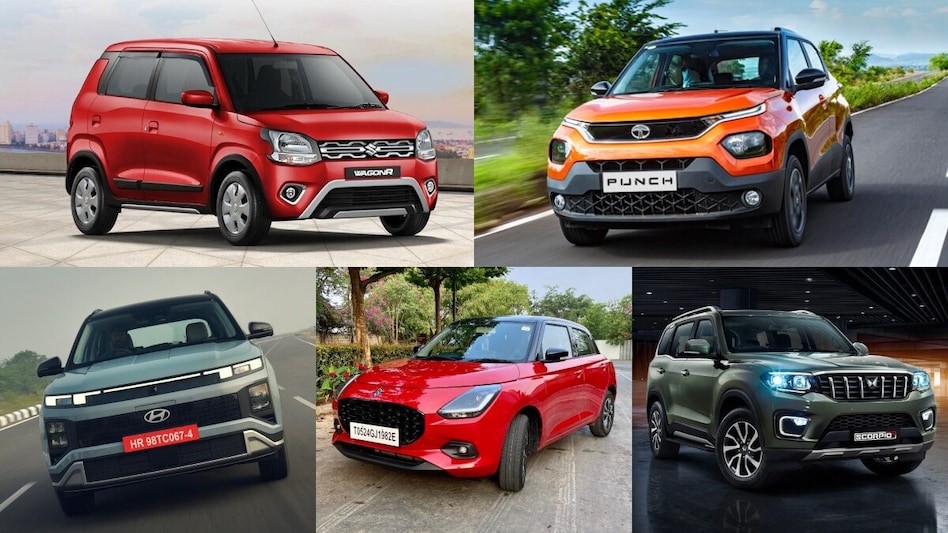 Not all cars have the same GST rate. Small cars, big cars, electric cars—each one faces a different slab under India’s complex tax system.
Not all cars have the same GST rate. Small cars, big cars, electric cars—each one faces a different slab under India’s complex tax system.
 Not all cars have the same GST rate. Small cars, big cars, electric cars—each one faces a different slab under India’s complex tax system.
Not all cars have the same GST rate. Small cars, big cars, electric cars—each one faces a different slab under India’s complex tax system.For millions of India’s middle-class families, owning a modest car remains a symbol of financial progress and personal freedom. But the dream of parking even an entry-level vehicle like the Maruti Suzuki Alto in one’s driveway is increasingly clouded by the heavy tax burden built into the cost of ownership—a reality that many believe punishes honest taxpayers twice over.
“Imagine a middle-class person wanting to buy a basic car like the Alto,” said Fundamental Investor, a popular financial influencer known for demystifying money matters online. “He works hard, pays income tax ranging anywhere from 15 to 30 percent. Finally, he goes to the showroom with his family to buy their first four-wheeler, only to discover the government’s hand in his pocket yet again.”
According to calculations shared by Fundamental Investor, the base price of an Alto stands at Rs 3,87,596. But this is just the starting point. A hefty Goods and Services Tax (GST) of 28 percent, plus an additional 1 percent cess, adds Rs 1,11,903 to the bill. On top of that, road tax and registration charges amount to Rs 94,248, and insurance costs Rs 30,890.
“In total, after already paying income tax on his earnings, the family ends up paying Rs 3.87 lakh to the car company and Rs 2.06 lakh directly to the government in the form of GST and other charges,” Fundamental Investor explained. “The government earns almost 53 percent of what the carmaker earns. The taxpayer feels betrayed.”
At the heart of this frustration lies GST—a tax the government imposes that significantly adds to the price of cars. But here’s the catch: not all cars have the same GST rate. Small cars, big cars, electric cars—each one faces a different slab under India’s complex tax system.
“GST has simplified taxation on cars in India compared to earlier times, but it still leaves basic car buyers struggling,” Fundamental Investor said. “If you’re buying a small petrol car under 1200cc, you’re looking at a 28% GST with just a 1% extra charge, or cess. Larger, luxury cars get hit with even higher rates, making GST a key player in shaping car prices.”
GST, introduced in 2017, did bring uniformity and predictability to India’s tax structure. Previously, multiple taxes like excise duty, VAT, and octroi complicated the pricing of cars, leading to regional price disparities and confusion for consumers. Today, GST has replaced these with a single tax, often giving buyers some relief compared to the old tax regime.
Yet, the rates remain steep, especially for vehicles considered basic necessities for many middle-class families. Here’s how GST varies across car categories in India:
Small Petrol Cars (Up to 1200 cc, less than 4m length): 28% GST + 1% cess = 29%
Small Diesel Cars (Up to 1500 cc, less than 4m length): 28% GST + 3% cess = 31%
Mid-sized Cars (Above 1200 cc petrol or 1500 cc diesel): 28% GST + 15% cess = 43%
Luxury Cars (Above 1500 cc): 28% GST + 20% cess = 48%
SUVs (Above 1500 cc, more than 4m length): 28% GST + 22% cess = 50%
Electric Vehicles (All capacities): 5% GST, no cess = 5%
“It’s high time the government rethinks GST for a basic four-wheeler,” said Fundamental Investor. “Twenty-eight percent is ridiculously high for a vehicle that’s not a luxury but a necessity for many middle-class households, especially in cities where public transport may not reach every corner.”
The influencer argues that the government should limit its earnings from such purchases to no more than 10 percent of the car’s value. Anything above that, he believes, sends the message that the country does not truly value its taxpayers.
“More than 10% tax means you don’t value taxpayers in the country,” he insisted. “These are people who contribute diligently through direct taxes already. Burdening them further when they try to spend on basic aspirations like owning a car is simply unfair.”
As conversations around tax reforms gain momentum in policy circles, voices like Fundamental Investor’s are shining a spotlight on how deeply tax structures affect everyday financial decisions. For the middle class, it’s not just about buying a car—it’s about being able to hold on to a larger share of their hard-earned income.